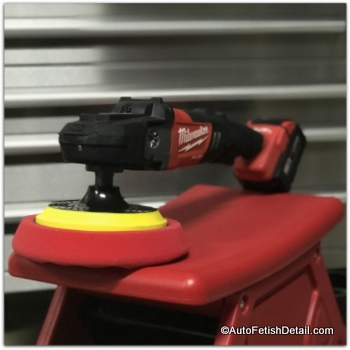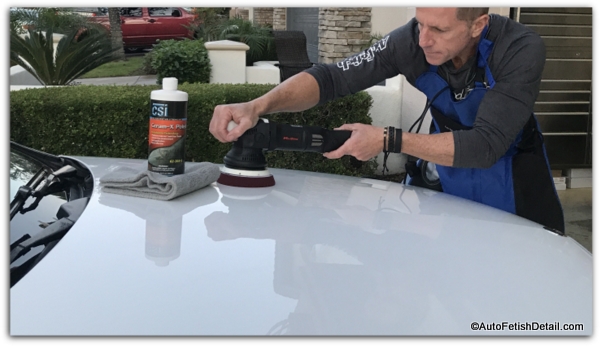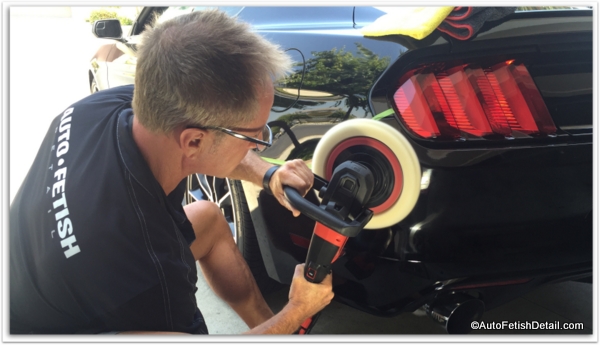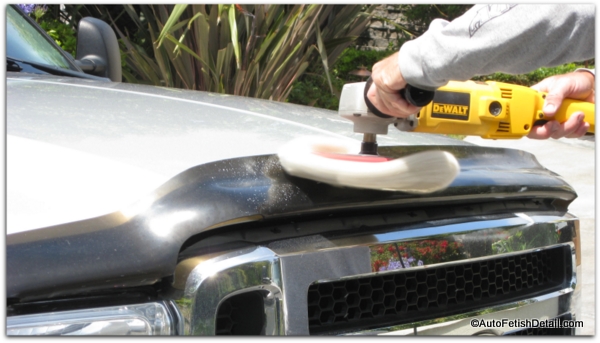Variable Speed Polisher
Top picks from orbital to rotary buffers

Variable speed polisher is really a generalization for the many
types of car buffers and polishers that exist today. It is hard enough to pick out a top rated variable speed polisher without first understanding which type of car polisher you are referring to begin with.
My goal with this website is to always deliver information that allows you to not only become a more informed consumer from which to make better decisions, but to improve your world of cosmetic car care and detailing.
I want you to get better results through information that comes from my decades of professional auto detailing experience.
Variable Speed Polisher:
Rotary or Dual-action
The good news is that today you have numerous choices of truly quality buffers and polishers. The bad news is that this will make the decision process that much more difficult. We will dissect the numerous variable speed polishers to see which one rises to the top and becomes your top pick of a quality car polisher.
Before we can go further, we need to make sure you and I are on the same page. Many terms and labels within the world of auto detailing are inconsistently used as this is no standardization when it comes to the endless list of tools, equipment, and products usd when it comes to cosmetic car care.
Polishers of many types or versions exist. A variable speed polisher can mean an assortment of car polishers and car buffers.
For this page, I will be discussing what is traditionally referred to as a rotary or high-speed car polisher rather than a random orbital or dual-action car polisher.
Variable Speed Polisher:
High-speed or Rotary
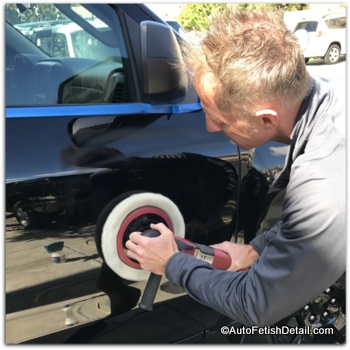
Generally when people refer to a variable speed buffer or polisher, they are usually referring to what is traditionally called a rotary, high-speed, or circular polisher. These types of buffers have been around the longest and represent the widest spread of abilities, speeds, and performance.
It is also an area of surface car care that is filled with really bad information, and endless stories of burned paint edges, swirl marks, or holograms. These stories circulate in all areas of life and they make for really good headlines. Unfortunately, all this bad press prevents many from understanding just how useful these types of polishers can be in the right hands!
Variable Speed Polisher:
Dual-action or Random Orbital Polisher
Since any dual-action (DA) or random orbital car polisher also has a variable speed setting, these types of car polishers could also be called a variable speed polisher.
But the difference between a random orbital polisher and a rotary car polisher is vastly different.
Random orbital or dual-action car polishers are the "go-to" car polisher for virtually any driveway detailer, car owner, or most professional detailers. They are considered the safest car buffer, the easiest to use, and the best way to enter the world of car paint polishing for any beginner.
But with all that said, random orbital car polishers have their own set of pros and cons just as any variable speed polisher does.
Why a Top Rated Variable Speed Polisher?
|
Pros:
|
Cons:
|
Based on the simple list above; the pros certainly out-weigh the cons. But I get it....all those damned horror stories of burned edges, swirl marks, or car paint damage in general!
"With the newest generation of variable high-speed car polishers and their super-low operating speeds, they can be as safe as any dual action, random orbital car polisher. It's just very few people are letting you know it."
That is correct!
Because the industry itself has responded by building some incredibly amazing dual action, orbital car polishers, most guys are easily seduced into buying one of these random orbital buffers, and never realize how much time they could be saving themselves if they take the time to learn how to use a rotary polisher.
Top Rated Rotary Car Polishers:
DEWALT DWP849X 7-Inch/9-Inch Variable Speed Polisher with Soft Start
- 12 amp motor
- Variable speed polisher
- 600- 3500 RPM's
- Professional grade
- Comes with (2) handle choices
- Soft trigger start and speed control
- Speed setting dial
- One of my favorites
Makita 9237CX3 7-Inch Variable Speed Polisher-Sander with Polishing Kit
- 10 amp motor
- Variable speed polisher
- 600- 3000 RPM's
- Professional grade
- Soft start trigger and speed control
- Speed setting dial
- One of my favorites
FLEX PE14-2-150 Rotary Polisher Starter Kit
- 10 amp motor
- Variable speed buffer
- 600- 2100 RPM's
- Soft start trigger and speed control
- Speed setting dial
- The Mercedes of high-speed polishers
- If you have the money, this is truly the Mercedes of equipment
Variable Speed Polisher:
Darren's Professional Tips
Rather than repeat myself over and over in the individual reviews, I am saving my remarks for here at the end since all these buffers are a sure thing! Meaning, you just can't go wrong with any of these buffers. As far as high-speed polishers, all of these will perform at professional levels and unless you have the privilege of doing a true side by side comparison, you will like any of them, and you will get used to any idiosyncratic difference between them. Just like most every other area of life, you get what you pay for so please allow me to add the few remaining tips:
- They all perform, and do so brilliantly.
- If you are of the opinion that German engineering means something different and are willing to pay for it, then the Flex is for you.
- If you want to save a few bucks then simply shop the cheapest of the bunch, and you will still be delighted.
- The Flex is the lightest and quietest of the bunch.
I hope this has helped open your eyes with greater understanding with which you can now make a more informed decision!
Sincerely,

|
|
